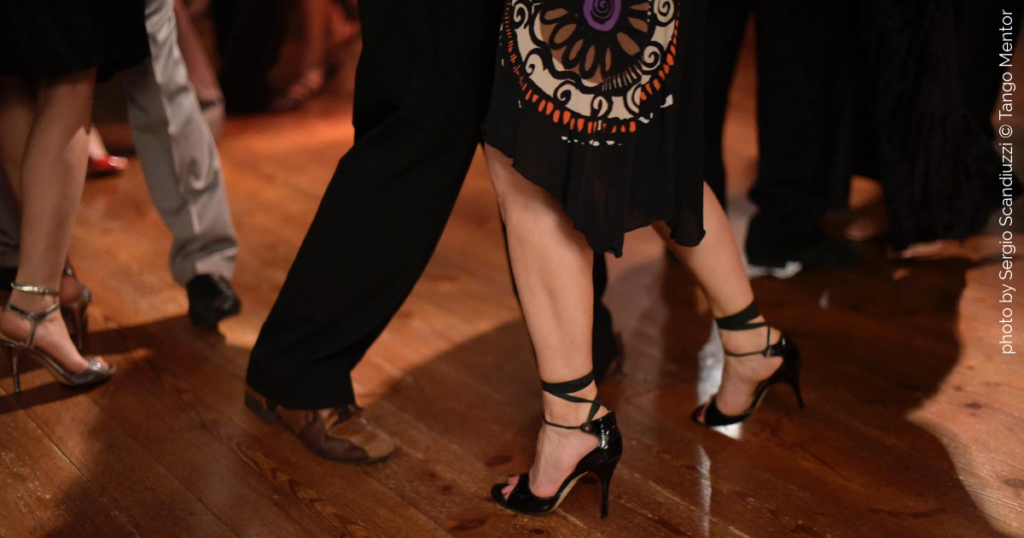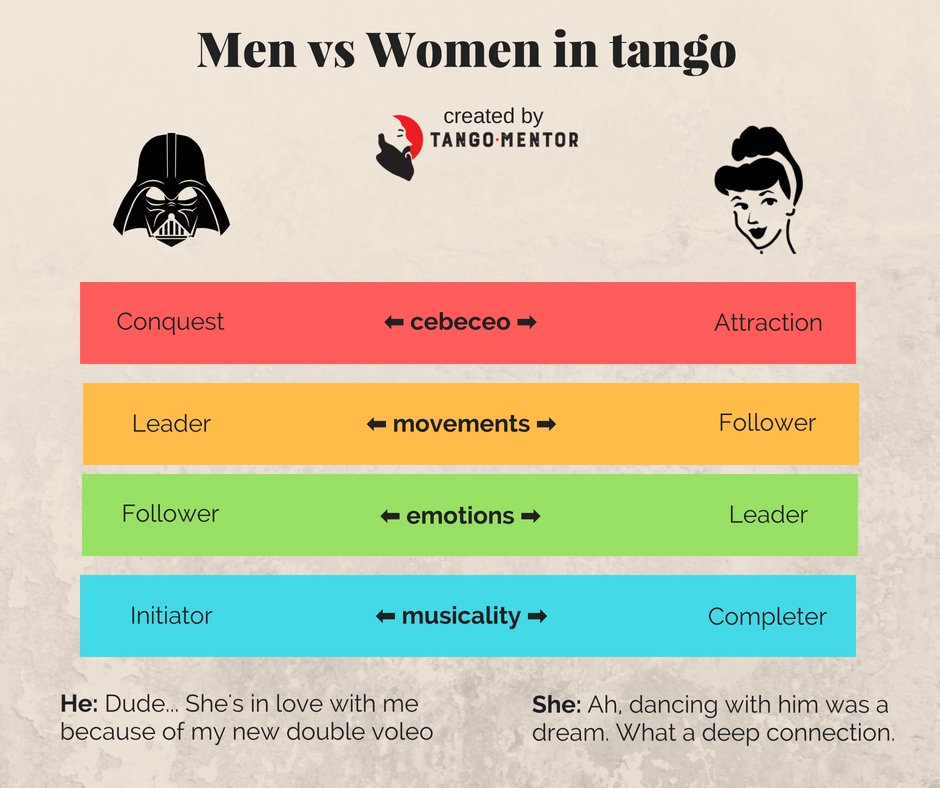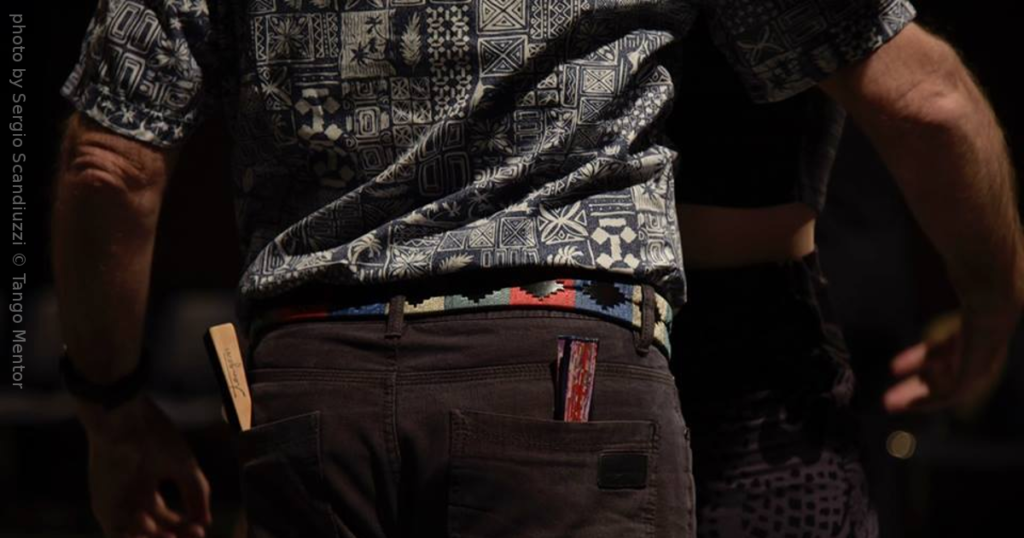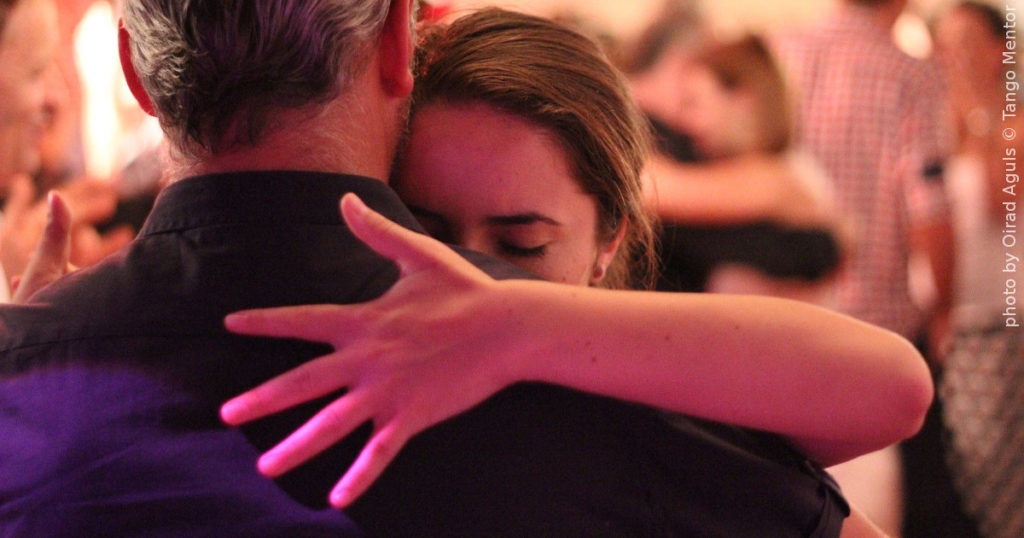 There is a difference between men and women. That is true for life and that should be true for tango as well. There are some who try to blur the line and to mix up the roles, but this will fail, as the nuevo tango project failed. In the best case, those people will create something new, some new dance or cultural expression, but it will for sure not be tango.
There is a difference between men and women. That is true for life and that should be true for tango as well. There are some who try to blur the line and to mix up the roles, but this will fail, as the nuevo tango project failed. In the best case, those people will create something new, some new dance or cultural expression, but it will for sure not be tango.
Yes, I know, many will disagree with me and that is their right. I decided to write this post just to show some of the arguments I have for these statements.
But, lets go step by step…
I studied literature, but to be honest I never enjoyed reading novels or stories. Poetry and non-fiction was always my thing. I love condensed forms. Dense with passion and meaning.
One of the books that make impression on me lately was “The Storytelling Animal – How stories makes us human” by Jonathan Gottschall.
At this point you might already asking yourself “Why he is telling me this?” – it is because it is this book that gave me the idea that I can present some solid arguments for the ideas I write in these articles. There are concepts there that are applicable to tango as well.
Here I am going to share that with you!
The pirates and their victims
The boys are the agents of chaos and entropy. They play with battleships, starships and other engines of war. They fight loudly and “die” in heroic struggle.
On the other hand, girls play with dolls, dress up, cook or chat and drink tea.
Gottschall quotes one study carried out by Vivien Paley, an early childhood researcher. She was born back in 1929 and witnessed how standard roles of men and women changed in society. Women moved in to the work force and men took on duties at home.
Yet, she concluded, in the kindergarten the calendar was stuck in 1955. The children were precious little embodiments of gender stereotypes.
Paley, who worked in progressive university environment, hated this. Why girls were so “girly”. They played with dolls and rarely wrestled. They often told stories about magical pink hippos.
Why the boys were so “boyish”? They sprinted and shouted. They bombed the room in imaginary war. Denied of toy guns they replaced them with similar object or just used their fingers.
When they played pirates they needed what all “hard men” need most – victims… and what better victims could there be than – the girls. They often destroyed games of girls with their violent games.
“It is hard to play Cinderella when Dart Vader and his storm troupers keep crashing the ball.”, says Gottschall.
No matter how hard she tried to impose more unisex approach, she failed. At the end Paley surrendered to the reality.
“Let the boys be robbers or tough guys in space – it is natural, universal and essential way of little boys”, she concluded.
Hey, sorry to interrupt…
Do you like reading my articles? If you do please consider a small contribution to the existence of this blog.
I don’t sell a book or run ads: I share these articles for free. Unfortunately I also have to pay my bills, so if you see value in my work please consider a small donation/gratuity (the same way you tip your favorite bartender).
From my heart to yours!
Ivica
Securely processed via PayPal
The slow evolution
“There are reliable differences in how the boys and girls play around the world”, writes Gottschall about what the anthropologist Melvin Konner concluded in his book “Evolution of childhood”.
Dozens of studies around the world and in different cultures concluded that boys and girls spontaneously segregate themselves.
Boys engage in rough and violent behavior. Girls are more focused in fantasy and pretend parenting games. The difference is measurable as early as 17 months of life.
Boys are more vigorous and engaging in conflict, while girls are engaged in games that are connected with nurture and affiliation.
Boys neverland is filled with deadly danger – monsters, deadly animals and dark forces – boys are fighting it or fleeing.
[Tweet “Being in male or female role is not advantage, nor disadvantage.”]
Girls neverland is also filled with danger – but it is not as deadly and violent, mostly focused on domestic crisis. Compared to boys world it might seem without trouble, but this is wrong – for them it is equally dangerous.
The conclusion is that the natural evolution is slow compared to the cultural. Maybe in the culture is not expected for women to stay at home and care for the children, but the instincts are still preparing them for this role.
“The idea that the gender has deep biological roots is something that everyone accepts these days, but still avoid saying in polite company. It sound like it too much limits our human potential, especially of potential of women to move in position of equality”, says Gottschall.

It’s the biology
But let’s go further. This idea of biological difference has also medical basis.
In this moment I am reading the book “Change your brain, change your life” by the psychiatrist and brain disorder doctor Daniel Amen. What he says in his book really explains many of the behavior differences that many contribute to the culture.
He describes the limbic system of the brain. It is the system which is in large part responsible for many aspects of motivation and emotion.
It is one of the oldest part of mammalian brain that helps them to be free of the reactions of the reptilian brain and express the instincts in different way. It is because of this system we have ability to develop passion, desire and drive – it is the limbic system that adds fuel to all these abilities.
The form you have selected does not exist.
What is interesting for us, tango people, is that the limbic system is also responsible to bonding and social connectivenes.
“The limbic system affects the bonding mechanism that enables you to connect socially with other people”, says Amen.
…and, the science has also discovered that the women have larger limbic system than men does. This gives women some advantages over men, specially in dancing tango.
“Current research has demonstrated that females, on average, have a larger deep limbic system than males. This gives females several advantages and disadvantages. Due to the larger deep limbic brain women are more in touch with their feelings, they are generally better able to express their feelings than men. They have an increased ability to bond and be connected to others (which is why women are the primary caretakers for children – there is no society on earth where men are primary caretakers for children). Females have a more acute sense of smell, which is likely to have developed from an evolutionary need for the mother to recognize her young. Having a larger deep limbic system leaves a female somewhat more susceptible to depression, especially at times of significant hormonal changes such as the onset of puberty, before menses, after the birth of a child and at menopause. Women attempt suicide three times more than men. Yet, men kill themselves three times more than women, in part, because they use more violent means of killing themselves (women tend to use overdoses with pills while men tend to either shoot or hang themselves) and men are generally less connected to others than are women. Disconnection from others increases the risk of completed suicides.”, writes Amen.
Being in male or female role is not advantage, nor disadvantage. There is no hierarchy. There is no leader, nor a follower. There is no initiator and interpreter/completer. All these are cultural constructs that just tried to blur the reality.
And the reality is…
That we are what we are and we enjoy doing what we are best equipped to. Of course, there are personal differences and we should respect them, but those exceptions could never become a norm.
The reality is that tango roles were developed to suit best women to do female role and men to do male role.
What is your opinion? Do you agree with me? I would love to hear what you think.
And also, don’t forge to share the article.


